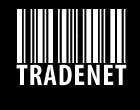BLOGSHARP: Cutting Edge Posts

U.S. Coins Found with Errors Can be Valuable
2008-06-04 10:53:09( Financial )
U.S. Coins are Not Always Perfect
Though the U.S. Mint uses rigid standards in coin production, not all of the coins it churns out are free of errors.
Errors can be in different forms. Even a minor shift in spacing between words or images is an error. Sometimes, there is a doubling of the images or characters on the coin.
While coins found with errors do not generally affect their usability as mediums of exchange, the flaws can actually add value to the coin. Sometimes the added value may be thousands of dollars times the coin's face amount. Even a mere penny with an error can make you as rich as someone who found gold.
Coins found with errors are not intentional and are often caused by minor glitches in the operation of the dies and machines. Even a split-second delay in filling molds can cause errors.
Types of Errors in Coins
A very common type of coin error is the incorrect die rotation for each side. You can easily detect this error by holding the head side up, and then turn it to its reverse side. If the reverse side is not facing the same top-bottom position, this is an error. This type of error is worth about twenty dollars per coin, depending on the degree of rotation error.
Double die casts of the words LIBERTY and IN GOD WE TRUST are also worth about between twenty to seventy dollars. Missing branch numbers as a result of unpunched dies also have the same value. Double die cast causing doubled-up images further increases the value of the coin by a few thousand dollars.
Back in 2005, a crack in the die caused a small line to run across the bison image of the nickel. This type of error can fetch about a thousand dollars.
Perhaps one of the most valuable errors in coins found is the doubling of the images of the obverse. This type of error is difficult to detect, and there have been claims which turn out to be counterfeits.
A Fortune in Coins Found with Errors
The errors are mostly found in pennies, nickels and dimes. Sort out your coins by denomination. Inspect the coins one by one, comparing each one with the others. If there are no differences, the coins are error-free. Keep repeating with the rest of the coins until you detect something.
Look carefully at the inscriptions, which are common sites of errors. Check for errors in mint marks, as well missing or doubling of characters, and any cracks on the coin that may be caused by faulty die casts.
Set aside any odd-looking coins. You might want to take these coins to a trained individual who can determine if the coins found with these errors and defects are truly worth anything.
All rights Reserved © Tradenet Services srl
Do not duplicate or redistribute in any form.
Blog
Tags
- Arts (73)
- Automobiles (375)
- Beauty (46)
- Business (989)
- Careers (12)
- Charity (71)
- Computers (788)
- Dating (153)
- Education (333)
- Entertainment (257)
- Family (39)
- Financial (2171)
- Games-Toys (7)
- Garden (68)
- Health (439)
- Hobbies (102)
- Home (311)
- Insurance (662)
- Legal (562)
- Online Shopping (67)
- Pharmeceutical-Medical (393)
- Real Estate (263)
- Sports (48)
- Style-Fashion (4)
- Technology (238)
- Telephony (235)
- Travel (283)
- Web Hosting-SEO-Web Design (786)
Archivio
- 2007
- 2008
- 2009
Tradenet Services srl 02860350244 Via Marconi, 3 36015 Schio (VI) Italy
+39-0445-575870 +39-0445-575399